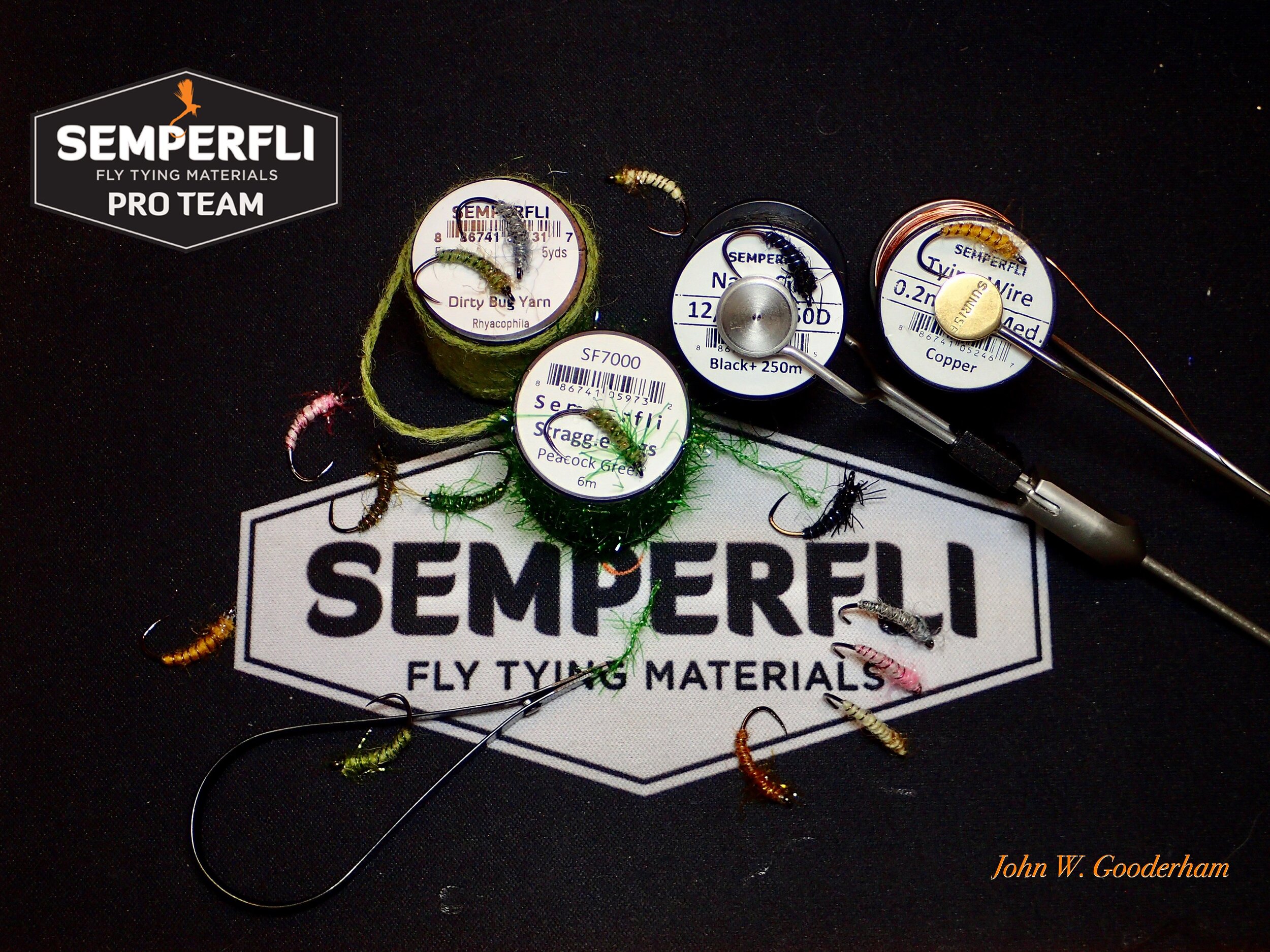Before discussing this week's fly pattern, let me introduce John Gooderham. John is a talented fly tyer on the Semperfli Pro Team of fly tiers, so it should come as no surprise that this week's fly pattern is made entirely of Semperfli materials.
John and his fly tying companion Frampton
I was immediately attracted to the WHAZIT because it is a buggy-looking nymph pattern that is sure to be a killer panfish pattern. I first learned about this pattern last fall and have tied up many of them, but they are yet untested. I anxiously await the coming of spring to correct that! However, John has tested this pattern extensively on both warm and cold water species, and it has produced well for him. Here is what John has to say about the fly.
Everything about WHATZIT just screams panfish!
The Whatzit is a fly born of necessity. I was looking to design a simple fly to catch multiple species and suggest a wide variety of insect larvae, scuds, or other subsurface food sources. The fly itself isnʼt so much of a pattern as it is a "style" of fly. My concept follows the "same from any angle" approach knowing that the suggestive flies often out-produce the detailed imitations. The great advantage is that the Whatzit can be tied in a variety of colors, sizes, and combinations. For example, the very first prototypes were done with a peacock herl body with wire ribbing. Iʼve since switched to the SEMPERFLI Dirty Bug Yarn for all the bodies for durability and reliable color renditions. Peacock herl can be dyed with the same materials and look completely different - it also does not respond well to Bluegill abuse or Trout teeth. DBY is available in a wide color range, can take lots of punishment, and is easy to work with. For all these reasons, the Whatzit is a winner (just look at the fish photos from the first day), but most importantly is the ability to fish this fly in so many different ways. You can keep the fly on your tippet and try several presentations until you find a productive one. Cast it slightly upstream and allow to dead drift to depth, swing as a traditional wet, retrieve with slow strips, and/or use a Sawyer "induced take" action. Just donʼt look away before your drift is complete! Enjoy this pattern, and Iʼll see you on the stream!
John Gooderham
The WHATZIT is a killer trout pattern as well!
The WHATZIT
Pattern Recipe:
Hook: #14 or #12 Scud style wet fly
Thread: Semperfli 12/0 NanoSilk colors optional
Abdomen: Semperfli Dirty Bug Yarn
Rib: Semperfli Tying Wire 0.2mm
Thorax: Semperfli Straggle Legs
Tying Instructions:
Wrap a #12 or #14 Scud hook shank with Semperfli 12/0 NanoSilk.
Secure Semperfli 0.2mm wire (Copper used here) to the underside of the hook shank.
Cover the wire with NanoSilk to the bend of the hook.
Secure 6cm of Semperfli Dirty Bug Yarn (Ryacophila color used) at the hook bend.
Twist the Dirty Bug Yarn clockwise and wrap it on the hook shank to a point slightly behind the hook eye. Secure with NanoSilk, and do NOT trim excess!
Rib the wire forward (I use a bobbin) to the excess Dirty Bug Yarn tie-in point. Wrap four turns of wire to form a thorax, half hitch, and break off the wire.
Tie in 2cm of Semperfli Straggle legs in your desired color (Peacock Green used here).
Cover wire wraps in the thorax area with NanoSilk and wrap up to the hook eye.
Wrap excess Dirty Bug Yarn forward to finish the thorax and tie off with NanoSilk - trim excess now.
Wrap Straggle Legs forward and tie off behind hook eye - trim excess.
Secure 8-10 hard wraps of NanoSilk for the head and whip finish to complete the WHATZIT. 4 materials, 3 minutes!
As always the materials to tie this versatile pattern can be found in our shop! Please consider supporting us the next time you need to purchase materials for your fly tying endeavors!















